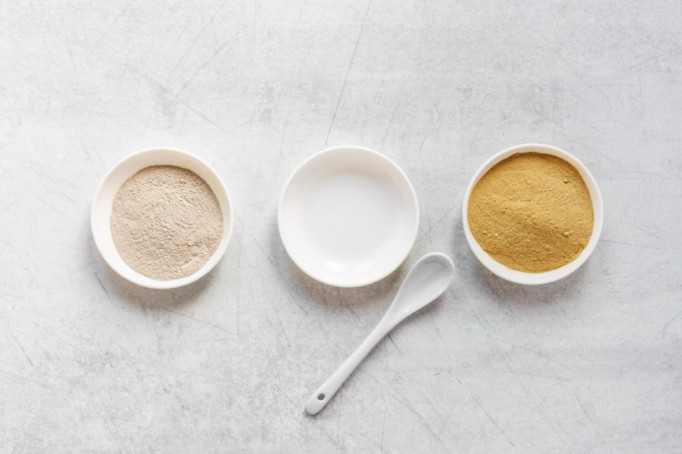Pharmaceutical formulations are a sophisticated blend of science and technology, where every ingredient plays a critical role in ensuring the efficacy, stability, and safety of the final product. Among the various excipients used in tablet and capsule formulations, microcrystalline cellulose (MCC) and carboxymethyl cellulose (CMC) stand out as two of the most versatile and effective components.
These excipients are essential for creating high-quality pharmaceutical products, often working in synergy to optimize drug delivery and performance. In this blog, we’ll explore the unique properties of MCC and CMC, how they complement each other, and their combined role in pharmaceutical formulations to improve both functionality and patient outcomes.
What is Microcrystalline Cellulose (MCC)?
Microcrystalline cellulose (MCC) is a purified, partially depolymerized cellulose derived from plant fibers. It is widely used in the pharmaceutical industry as a binder, filler, and disintegrant in tablet formulations. MCC is celebrated for its exceptional compressibility and binding properties, making it a go-to excipient for direct compression techniques.
One of MCC’s greatest advantages is its ability to form strong, durable tablets without the need for complex processing. Its porous nature also enhances the dissolution and bioavailability of the active pharmaceutical ingredient (API), ensuring effective drug release. Furthermore, MCC is chemically inert, non-toxic, and compatible with a wide range of APIs, making it an indispensable excipient in pharmaceutical formulations.
What is Carboxymethyl Cellulose (CMC)?
Carboxymethyl cellulose (CMC) is another cellulose derivative used extensively in pharmaceutical formulations. Unlike MCC, which is primarily a solid binder, CMC is used as a stabilizer, thickener, and disintegrant, particularly in liquid and semi-solid formulations. CMC is created by chemically modifying cellulose with carboxymethyl groups, which impart excellent water solubility and viscosity-controlling properties.
In pharmaceutical applications, CMC is often incorporated to improve the suspension stability of liquid formulations or to enhance the mechanical integrity of solid dosage forms. It is particularly valued for its ability to regulate the release of APIs, ensuring a controlled and sustained drug action. Additionally, CMC’s non-toxic and biodegradable nature makes it a safe and environmentally friendly excipient for pharmaceutical use.
How MCC and CMC Work Together in Pharmaceutical Formulations
1. Complementary Binding and Disintegration
While MCC excels at binding, helping to form compact and robust tablets, CMC focuses on disintegration by promoting water absorption and swelling. When used together, these excipients create a balance between tablet strength and disintegration time.
For example, MCC ensures that the tablet remains intact during manufacturing, handling, and storage, while CMC facilitates rapid disintegration upon ingestion. This synergy is essential for immediate-release formulations, where quick drug dissolution is critical for therapeutic efficacy.
3. Improving Patient Compliance and Experience
Patient compliance is a critical factor in the success of any pharmaceutical product. Tablets and capsules that are too hard to swallow or slow to dissolve can discourage patients from completing their medication regimen.
With MCC and CMC working together, pharmaceutical formulations can achieve the ideal balance of tablet hardness, smoothness, and disintegration, ensuring a positive experience for the patient. Additionally, CMC’s ability to control viscosity in liquid formulations makes it easier for patients who prefer or require liquid medications.
2. Enhancing Drug Stability and Uniformity
MCC and CMC also enhance the physical and chemical stability of pharmaceutical formulations. MCC’s inert nature prevents interactions with the API, while CMC’s ability to stabilize suspensions ensures uniform drug delivery in liquid formulations.
In solid dosage forms, MCC provides structural integrity, while CMC ensures the even distribution of ingredients. This combination minimizes segregation, ensuring that each tablet or capsule contains the precise amount of active ingredient required.
4. Supporting Advanced Drug Delivery Systems
The combination of MCC and CMC is not limited to conventional formulations. These excipients are also instrumental in the development of advanced drug delivery systems, such as controlled-release tablets, bioadhesive gels, and film-coated tablets.
MCC acts as a strong structural component, while CMC contributes to controlled swelling and API release. Together, they enable the precise delivery of drugs over an extended period, reducing dosing frequency and improving therapeutic outcomes.
Applications of MCC and CMC in Pharmaceutical Formulations
| Application | Role of MCC | Role of CMC |
| Tablet Formulations | Binder, Filler, Disintegrant | Disintegrant, Binder (in moist formulations) |
| Liquid Suspensions | Stabilizer for solid components | Thickener, Stabilizer for API suspension |
| Controlled-Release Forms | Compression aid | Swelling agent for controlled API release |
| Topical Gels | Provides structure for powdered formulations | Viscosity enhancer and stabilizer |
This table highlights the complementary roles that MCC and CMC play across various pharmaceutical formulations, showcasing their versatility and importance in modern drug development.
Why MCC and CMC Are Essential for the Pharmaceutical Industry
The combined use of microcrystalline cellulose and carboxymethyl cellulose offers numerous benefits for pharmaceutical excipient manufacturers. These excipients improve manufacturing efficiency, enhance drug performance, and support patient compliance. Their synergistic properties allow for the creation of formulations that are both effective and patient-friendly, addressing a wide range of therapeutic needs.
Moreover, their compatibility with advanced manufacturing techniques, such as direct compression and wet granulation, makes them indispensable for large-scale production. As the pharmaceutical industry continues to innovate, the versatility of MCC and CMC ensures their ongoing relevance in both traditional and modern drug delivery systems.
Conclusion
In the world of pharmaceutical formulations, excipients like microcrystalline cellulose (MCC) and carboxymethyl cellulose (CMC) are more than just inactive ingredients. They are essential components that enhance the stability, efficacy, and patient experience of the final product. MCC provides unparalleled binding and compressibility, while CMC ensures efficient disintegration and controlled drug release. Together, they create a perfect synergy that benefits both manufacturers and patients.
At Ankit Pulps and Boards Pvt. Ltd., we specialize in manufacturing high-quality microcrystalline cellulose for pharmaceutical and food industries. With state-of-the-art R&D facilities and a commitment to innovation, we ensure that our products meet the highest standards of quality and performance. By combining expertise with advanced technology, we aim to support the global pharmaceutical industry in creating safer and more effective formulations.

